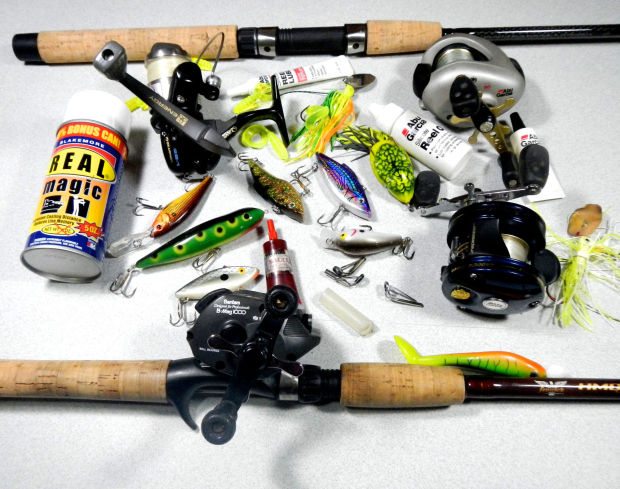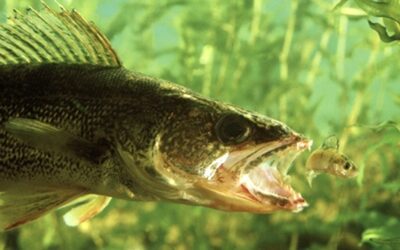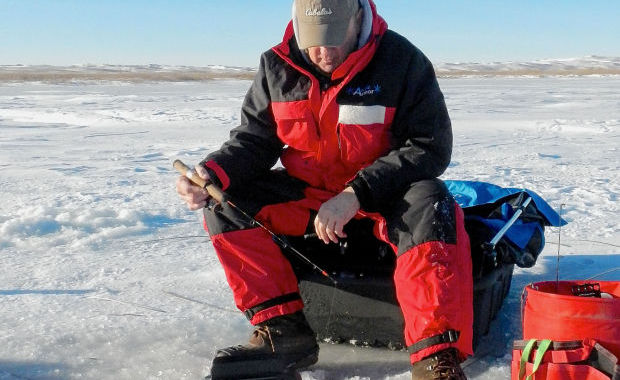In most years, by November, many outdoorsmen have put their fishing gear away and only thinking about hunting.
With as warm as we’ve had and no water being frozen up, many open water anglers are still out there, spending time on the water and catching some fish.
Once you do decide to give it up, you should check your fishing gear, tackle and your rods and reels, making sure everything is ready to go fishing next season.
What I do before putting my rod & reels away is to look them over, getting an idea as to what needs to be done so they’re ready when the water opens up next this spring.
You’ll want to wipe them down, and when you’re doing this, look them over closely. On your rods, you’ll need to check the guides and making sure, that they aren’t cracked and need replacing.
Some of the guides may have a crack that’s you can’t see, if you don’t find the cracked guide, the next time you go to throw a bait, that minute crack you didn’t detect may cut your line and the bait will be lost. Try running a Q-Tip over each guide and if some of the cotton stays in the guide, you’ll have to replace the guide or set it aside and go to another rod that you had preciously inspected.
Many of the reels out there, when new, come with oil and instructions as to how to lube them. If needed lube the reel and make any adjustments that are required.
It’s a good idea to loosen up the reels drag before putting it away. The drag on most reels is no more than two fiber washers that press against each other, creating friction, allowing line slippage when a big fish makes a run.
If you store your reels with the drag tightened, and they are damp, the next time you go to use them, they may be froze up and not working and by loosening them up, they won’t be locked up the next time you go fishing.
On the reels I use most often, I’ll check my line, if I find any frays, nicks or weak spots. I’ll change the line on that reel, making sure that it’s done correctly, as winding line onto a spinning reel is done differently than line wound onto a baitcasting reel.
On spinning reels, lay the spool on the floor with the label facing up, run the line through the last guide and tie it onto your spool with a good knot such as the arbor knot. Hold onto the line, while you are spooling up, applying a slight amount of tension. Begin reeling, if you have wraps or twisted line, turn the spool over and begin reeling again. You’ll want to check from time to time to assure the line is going on strait and not twisting. Continue filling your spool until there’s only about 1/8″ left on the reel spool.
For baitcasting reels, you can want to run your line through the rod guides to the reel, tie a good knot and then put a pencil through the middle of the spool. Have someone hold it, while applying a slight amount of tension on the line spool and reel on the line on until there’s only about 1/8″ left on the reel spool.

Before putting your fishing gear away for the winter, you’ll want to check it over so you’re ready for the spring fishing season. Start by replacing the frayed-worn line on your reels, rod cracked guides, rusted hooks on your crankbaits, sharpen dull jig hooks and sort out your baits in your tackle boxes. (Larry Myhre Photo)
This is the time of the year when I like to go through my tackle bags and boxes. It gives me an opportunity to straighten out any tackle that may have gotten misplaced and to wipe out any moisture and gunk that might be in the boxes.
Like many anglers, I have tackle boxes or bags for each species of fish, mine hold different sizes Plano plastic boxes, allowing me to exchange boxes whenever I want to use different baits.
When going through your tackle bag or box, you should check your baits crankbaits, spoons and other tackle for rusty hooks and replace those that have rusted. This is especially important on jigs, as they were bounced along rocks, drug through weeds, timber and snags and those you used a lot could have been put them away wet. If so, and they appear rusty, you’ll need to check them over, and if they are in bad shape replace them
Check out the hooks on all your baits to see if they are sharp and if you can’t get the hook to dig into your fingernail as you slide it across it, you should get your hook file out and sharpen those hooks up.
When you’re going through your fishing tackle anglers, you may want to take remove of the baits you no longer use to make room for the new baits that you couldn’t live without on your last visit to the fishing department of a sport shop.
By taking a little time out to clean your rods and reels, tackle bags, boxes and replace worn guides and line, you’ll be way ahead of the game next spring when it’s time to hit the water and fish the early spring season.





0 Comments